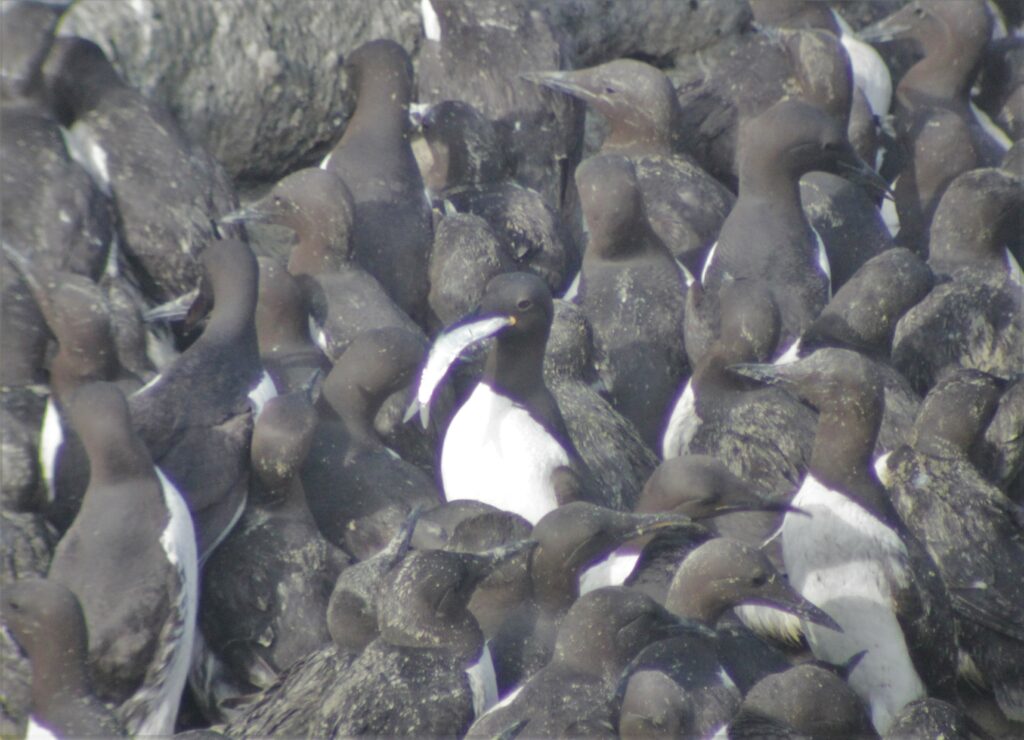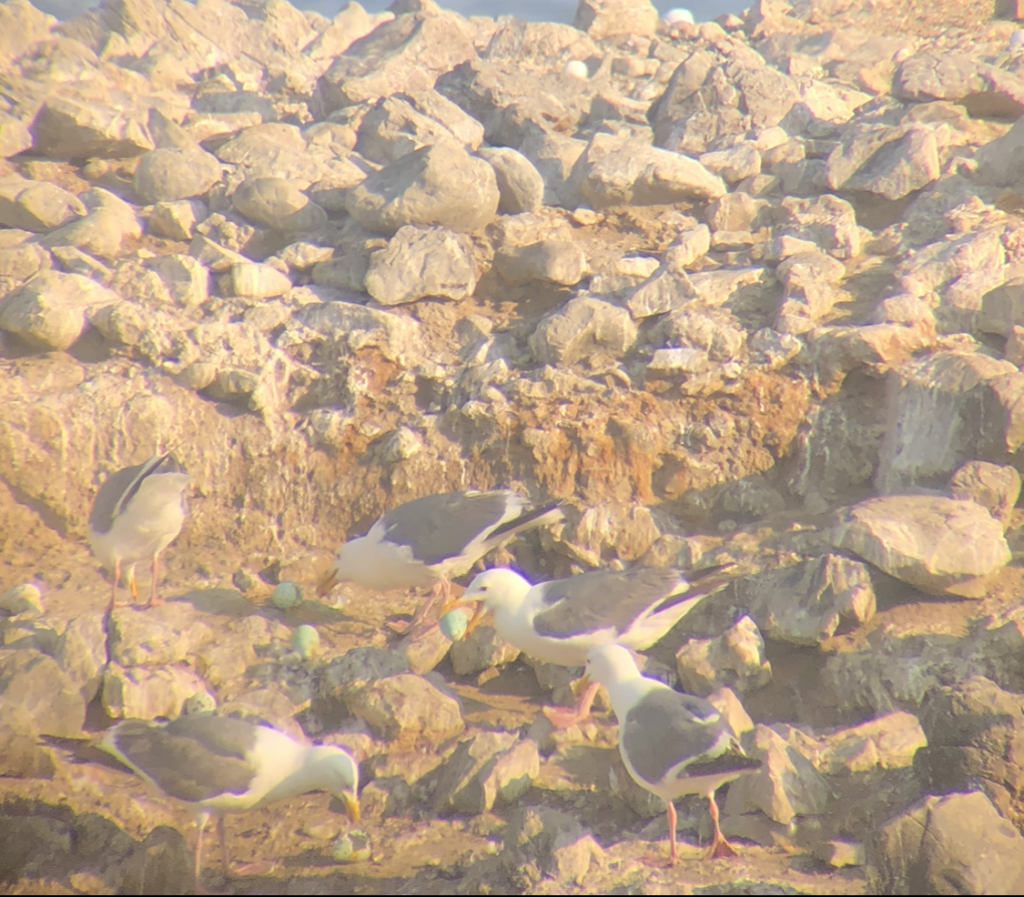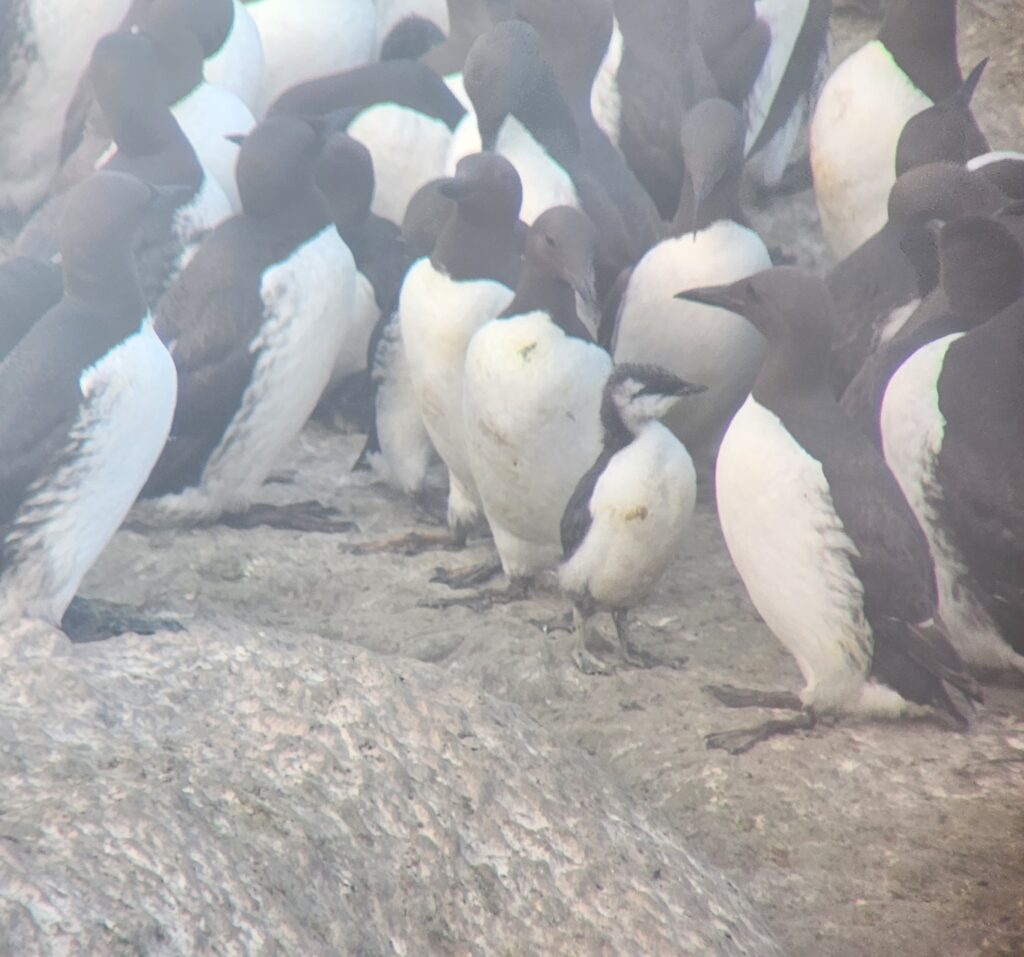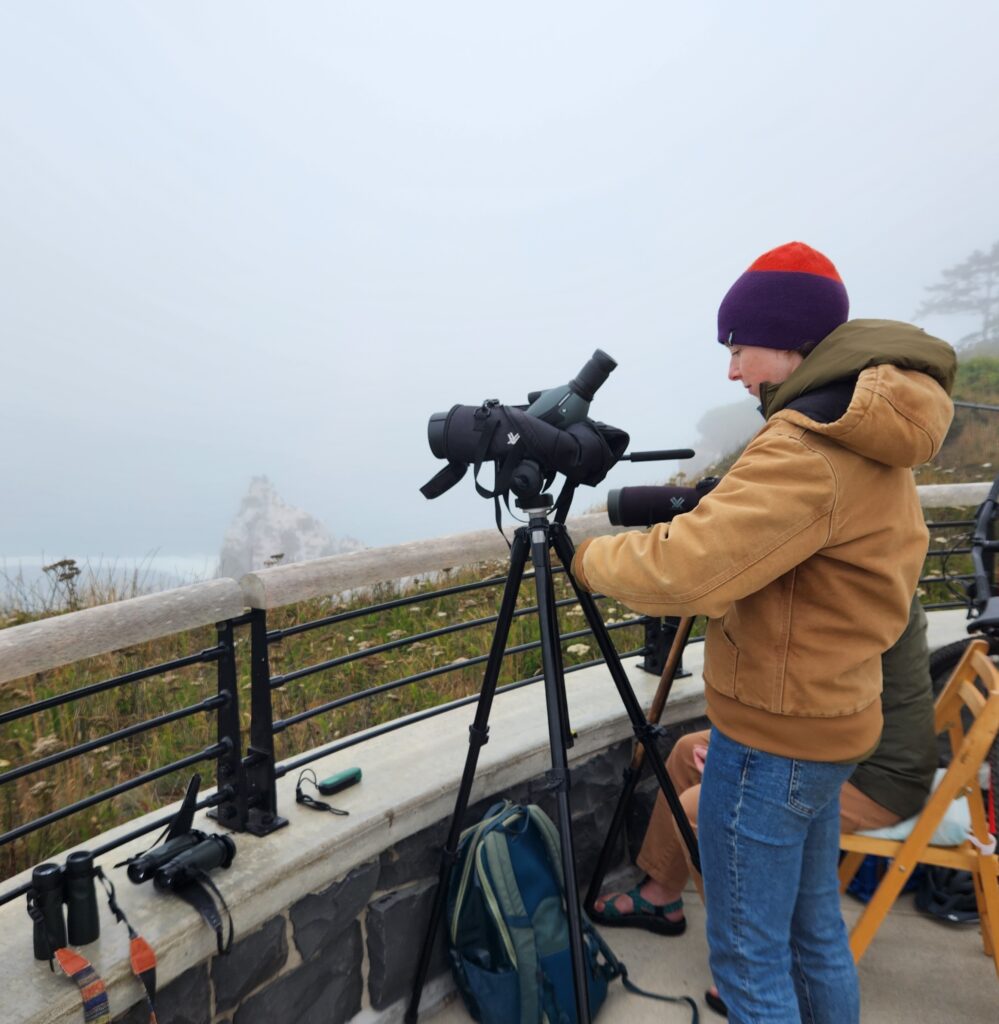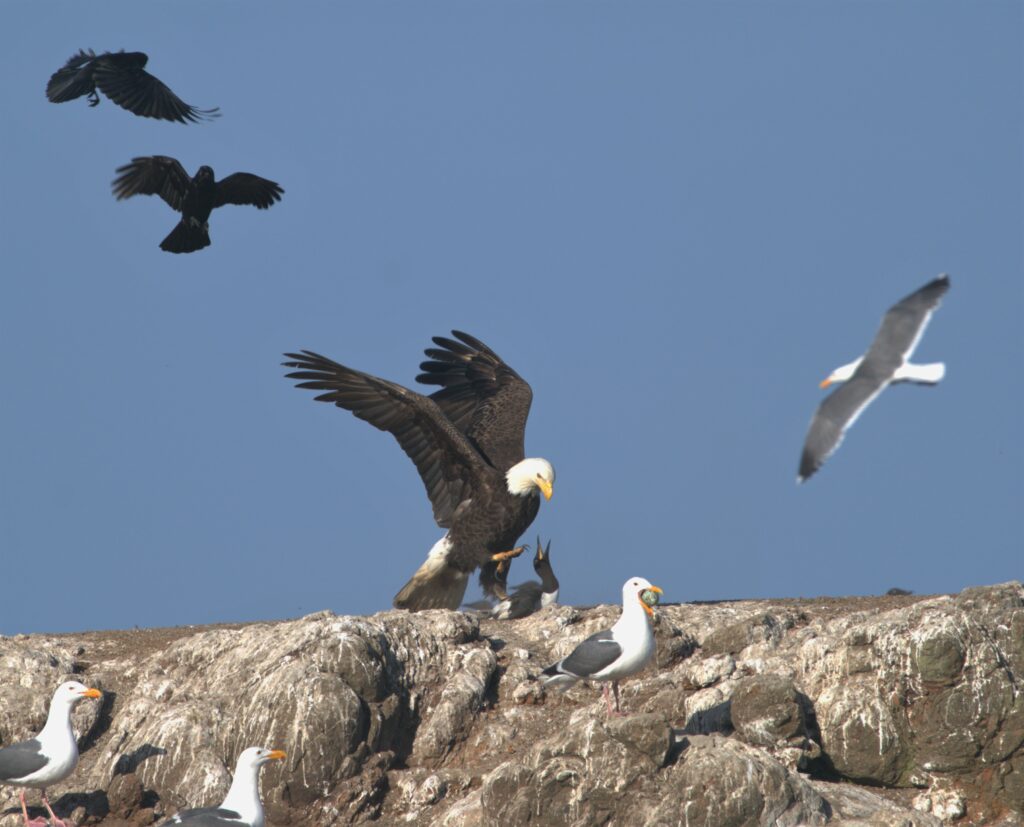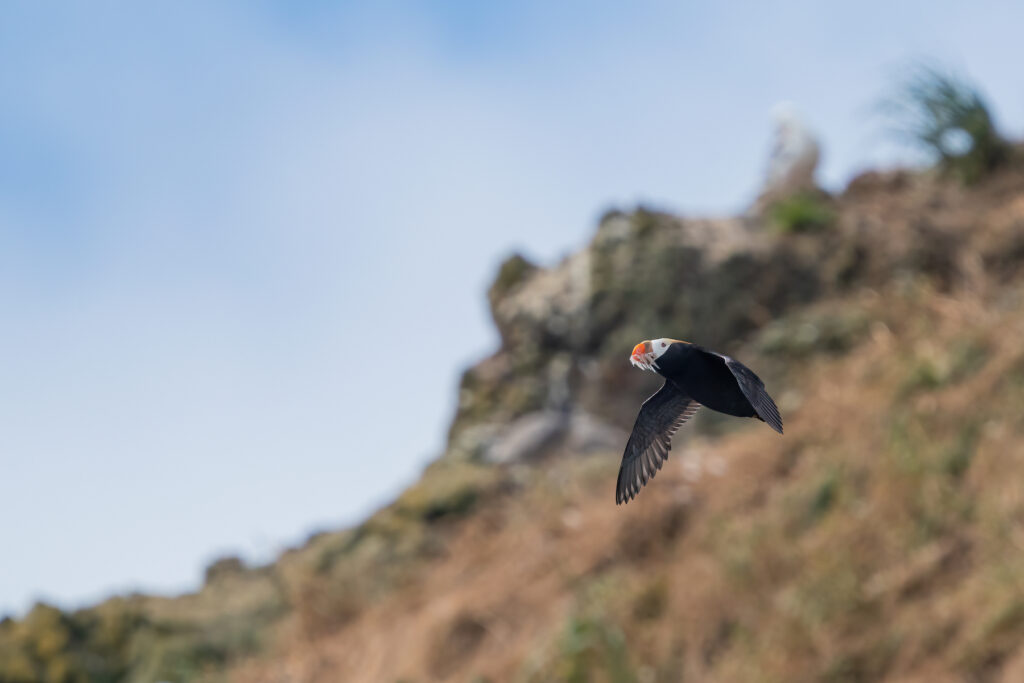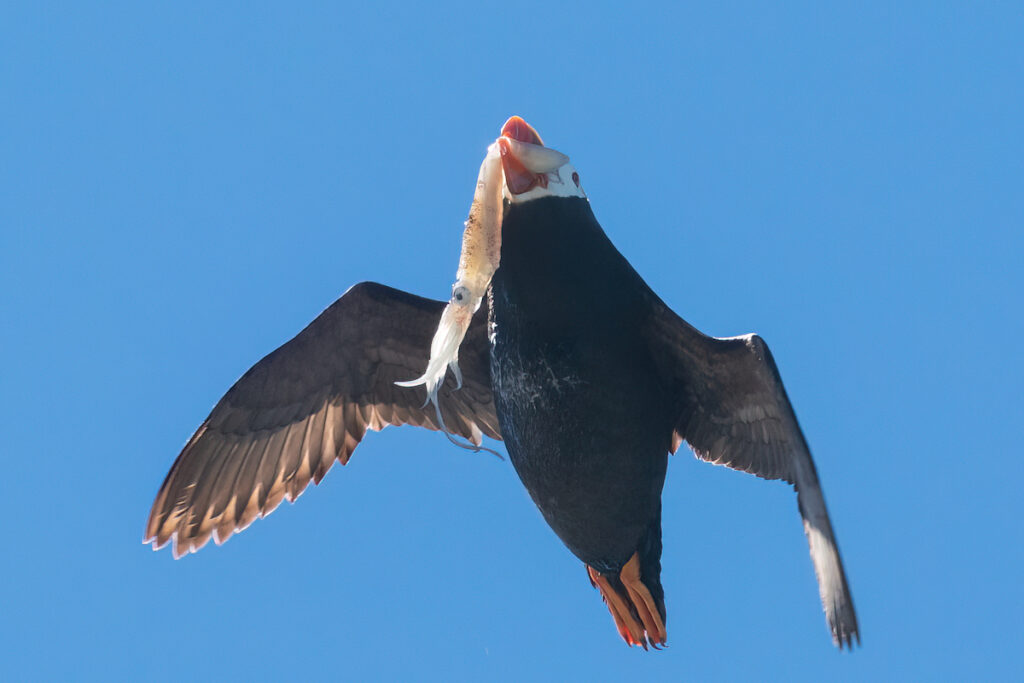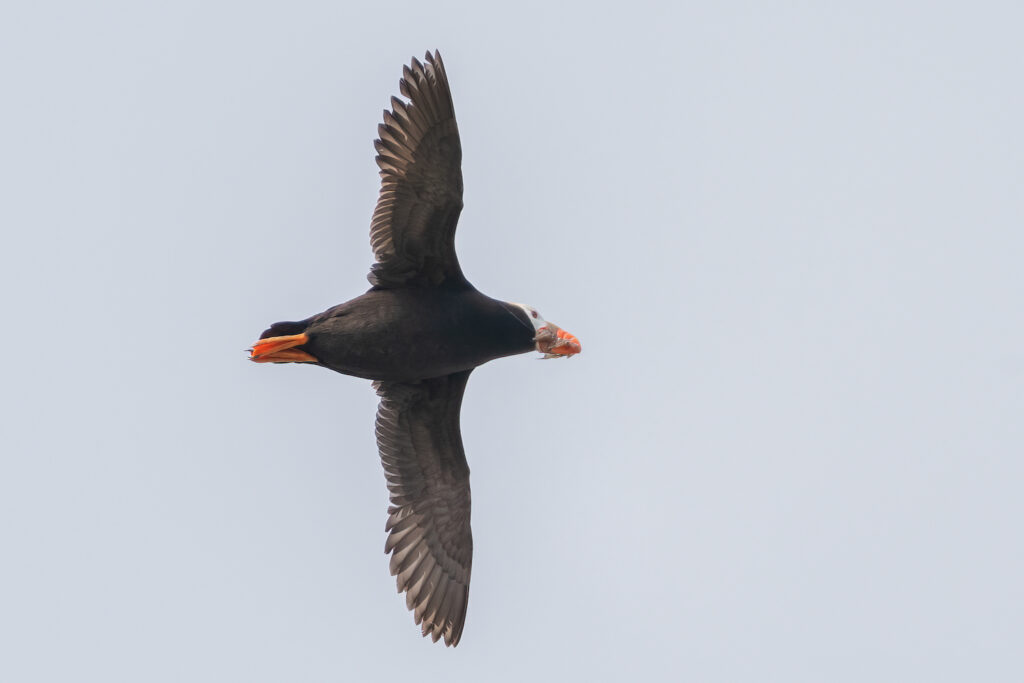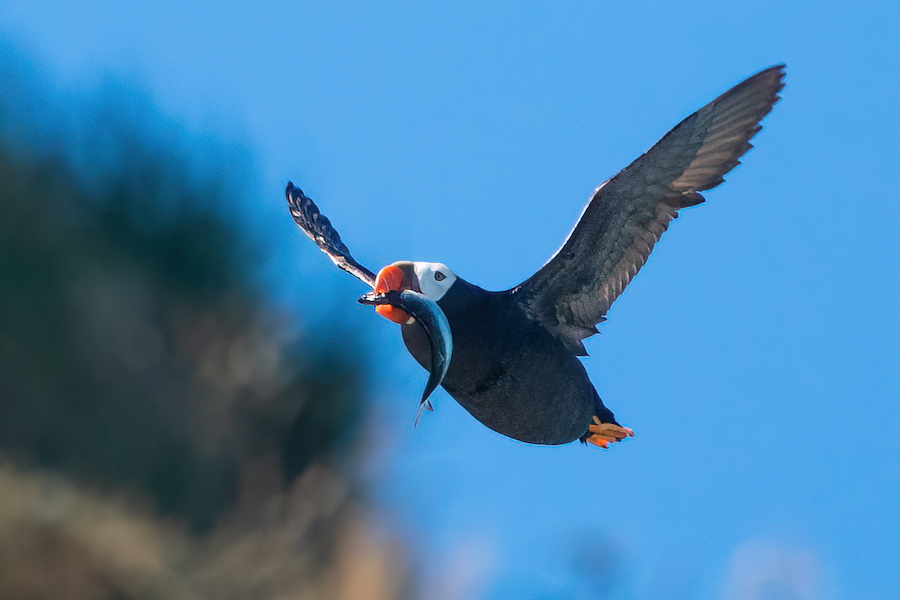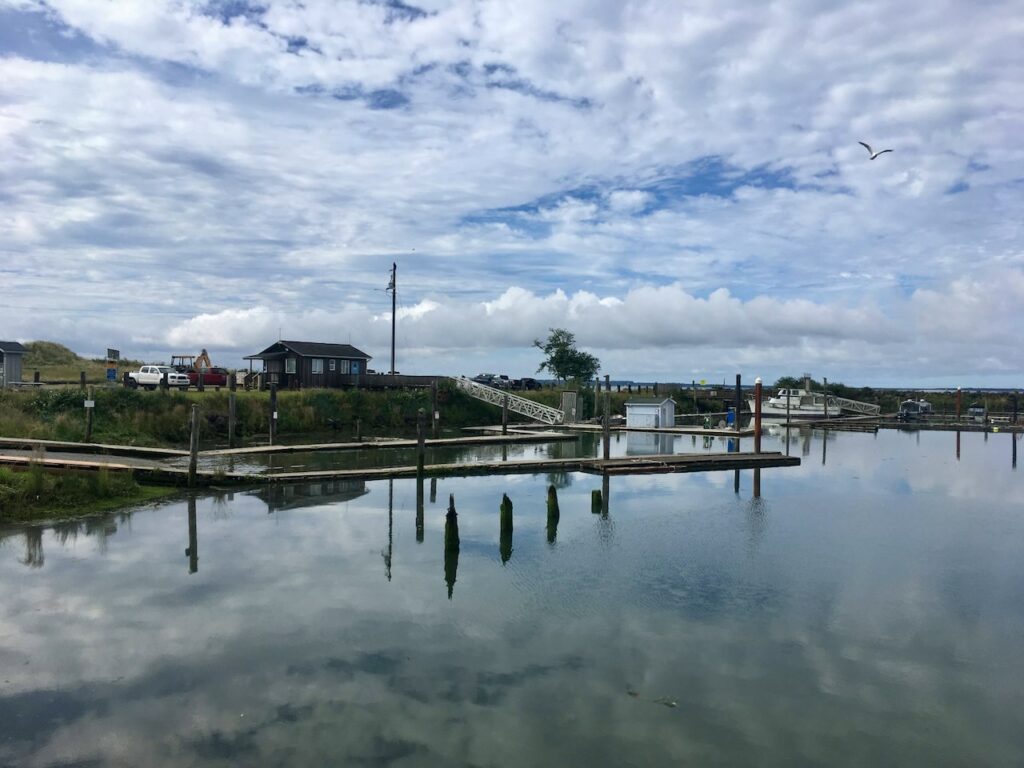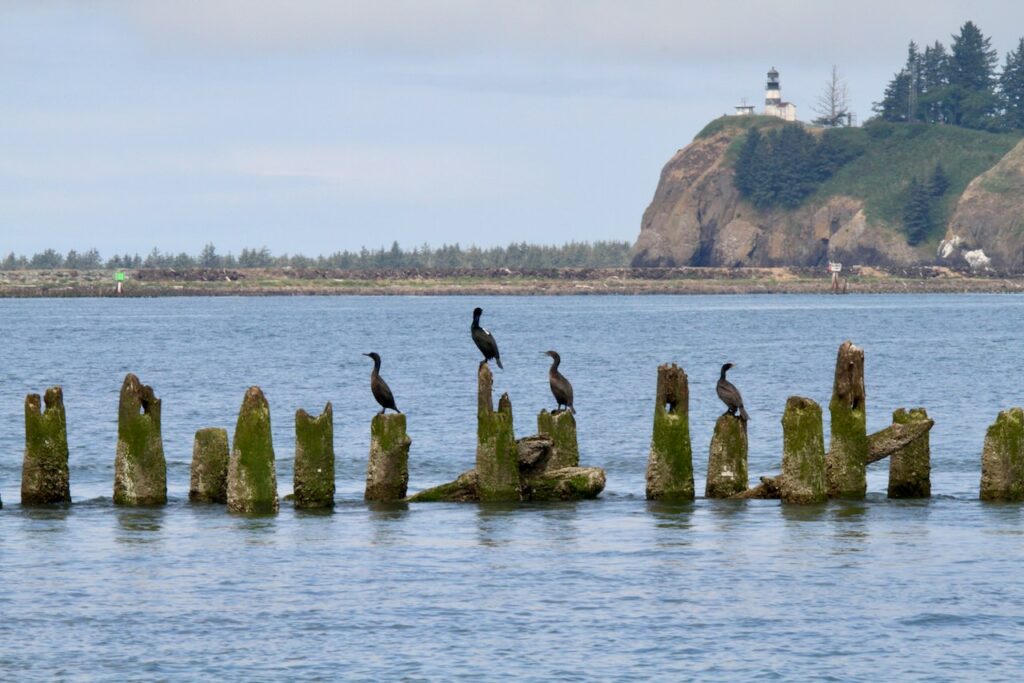By Travolis Williams, Oregon State University undergraduate
Was sup everyone,
My name is Travolis Williams. I am a Junior currently at Oregon State University. I am originally from St. Louis, Missouri. I came to Oregon to pursue a degree in marine biology and found this once in a lifetime opportunity with VIEW fellowship this past February. I intern with the Seabird Oceanography Lab at the Hatfield Marine Science Center.

I currently work on two projects within the department. One being monitoring seabirds along the coast at Yaquina head and Depoe Bay surveying the two colonies with Common Murres, Pelagic Cormorants, Brandt’s Cormorants, and the Western Gull (Field work). The data gathered in this project is extremely specific and has been tracked for an extended amount of time making it equally as important as it is relevant and up to date. I have had the wonderful opportunity to work under Rachael Orben, William Kennerley, and his additional intern, Aya Attal to observe the unique behaviors and aspects of each of these species of enticing birds.
The second project is processing fecal matter from otter communities along rivers and estuaries in southern Oregon. The scat, as we call it, is collected so the scat’s compenets can be identified via microscope in order to assess river otter diet. River otters are generalist predators that sometimes feed not just on fish and invertebrates, but also on breeding seabirds. We collect these scat samples because Luke, the cool graduate student whose project it is, surveys the dynamic of otter predation on Leach’s Storm-petrels. Storm-petrels are a very ecologically important species because they play a vital role in being an indicator of the current environmental conditions that they are accustomed to. Furthermore, they are needed to maintain the ecosystems they are a part of.
Recently, I had a chance to go to the Port Orford Field Station, a research facility staffed by OSU (Oregon State University) and USDA, and it was and wonderful experience. I was only there for three days total but had so much fun. As far as work goes, we went kayaking down the Chetco River where I could do fieldwork with Luke S., the graduate student, collecting otter scat along the river’s banks. I learned that otters defecate on rocks called latrines and are also used for socializing and scent marking. It was also my first-time kayaking which was incredibly fun for me.
The next day we did in-land work to give us a break from the water and ran into an amazing group of otters in the water and while collecting scat me, Luke, and his assistant Colton ran into a wild otter that was no more than 6 feet from us before it calmly turned around. The final day we went kayaking down Coos Bay river where we did not find much otter scat, but I did learn that raccoons and otter most likely have some sort of relationship with one another because we found that raccoons and otters use the same latrines. I also learned that waves are not anything to be taken lightly because being on a wave crest a foot off the surface of the water is not all too fun when you are an amateur kayaker.

Overall, the trip was amazing, and the trip was one of a kind. Even the staff in the facility were wonderful. We had a chance to go free diving and even went everyone was all in from work before bed we would watch a movie that everyone would enjoy.



















